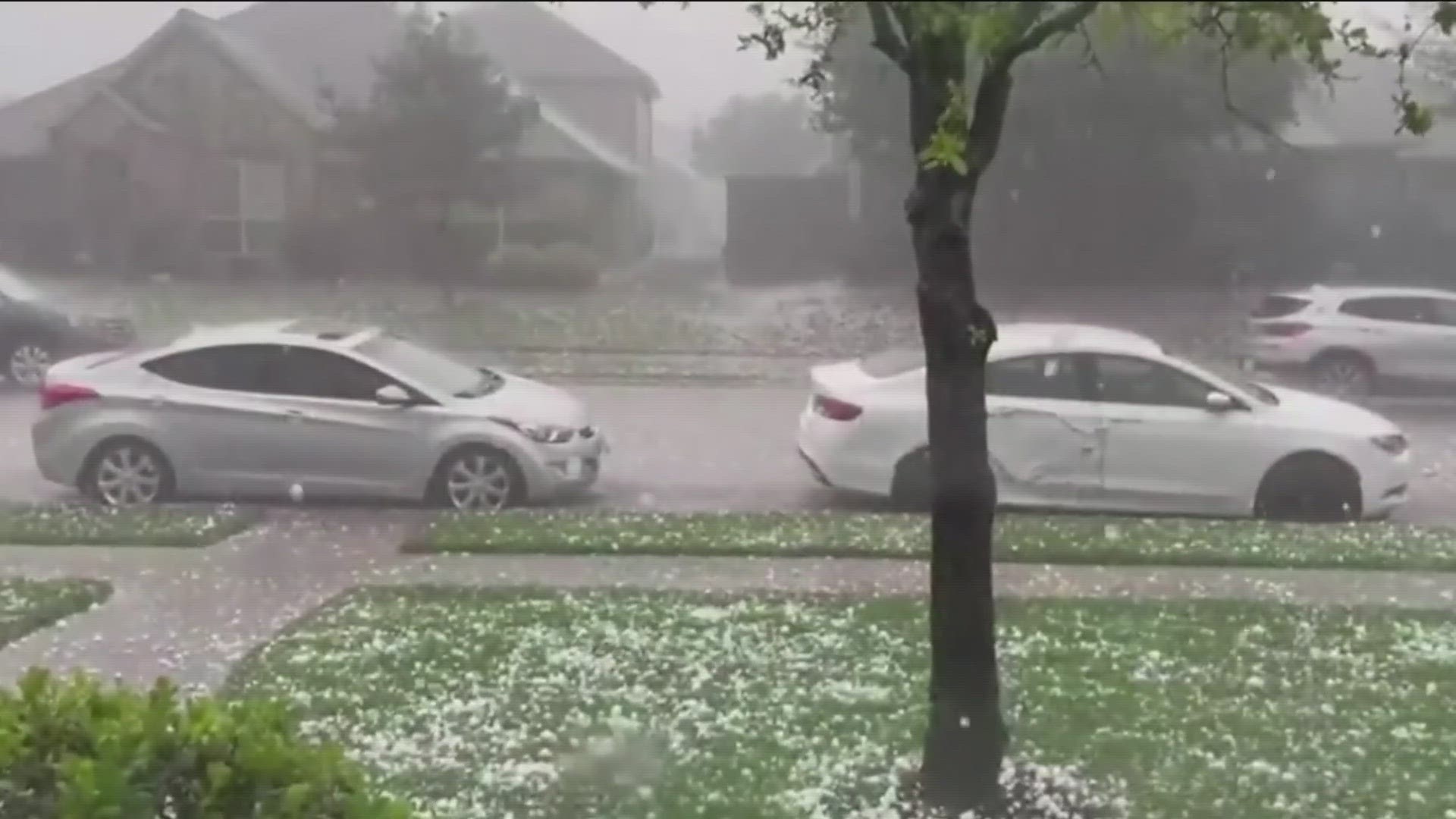AUSTIN, Texas — Intense storms swept through the Midwest on Wednesday with what some described as "gorilla hail."
While that won't be the case for Central Texas, the KVUE Weather Team is monitoring the risk for significant hail that could be 2 inches or more in diameter for Friday. Here are some hail facts from the National Weather Service and Associated Press.
How hail forms
Hail is a type of frozen precipitation that forms during thunderstorms, typically in the spring and summer months. Strong updrafts, which are the upward flow of air in a thunderstorm, carry up very small particles called ice nuclei that water freezes onto when it passes the freezing level in the atmosphere.
Small ice balls start forming and, as they fall towards the Earth's surface, they can get tossed back up to the top of the storm by another updraft. Each trip above and below freezing adds another layer of ice until the hail becomes heavy enough to fall to Earth.
The size of hail varies and can be as small as a penny or larger than apples due to varying updraft strengths said Mark Fuchs, senior service hydrologist at the National Weather Service in St. Louis, Missouri.
Hail sizes in diameter
- Pea: quarter-inch
- Mothball: half-inch
- Penny: three-quarters of an inch
- Nickel: seven-eights of an inch
- Quarter: 1 inch (hail at least quarter size is considered severe)
- Ping Pong ball: 1.5 inches
- Golf ball: 1.75 inches
- Tennis ball: 2.5 inches
- Baseball: 2.75 inches
- Large apple: 3 inches
- Softball: 4 inches
- Grapefruit: 4.5 inches
Damage done in Texas and nationwide
Last year was particularly expensive for storm damage, mainly because of hail. Texas led the nation in the number of buildings damaged.
According to data compiled by CoreLogic and made public this week, hail caused more damage across the U.S. last year than tornadoes and straight-line winds.
One local example: the storm that hit Travis and Williamson counties on Sept. 24, 2023, resulted in the costliest hail damage ever. The losses from the storm for the two counties added up to about $600 million – about $300 million for Travis County and $300 million for Williamson County.
Nationwide, hail causes about $1 billion in damage to crops and property annually. A hailstorm that hit Kansas City on April 10, 2001, was the costliest ever in the U.S., causing about $2 billion in damage.
Largest recorded hailstone
In 2010, a hailstone in the U.S. fell in South Dakota that was nearly as big as a volleyball. It was 8 inches in diameter and weighed almost 2 pounds.

